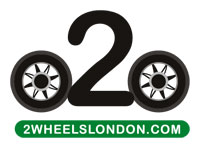Brake - the UK’s road safety charity – is hosting its Road Safety Week from November 17-23.
This year the focus is on ‘After the crash’, during which victims of road crashes will be remembered.
During the week’s activities there will be reflections in the media from the families and friends left behind after a road death, and space for victims of crashes who survived their ordeal but who carry the scars of the incident to this day.
Last year, almost 1,700 people died on UK roads; 306 of them were motorcyclists. Another 130,000 road users were injured, with 30,000 suffering life-changing injuries. More than 17,000 bikers were injured, 5,000 seriously.
That’s why this year, Road Safety Week’s focus will be on the victims.
How do you stay safe on your bike?
For motorcyclists, speed, focus and visibility are three big factors if are to reduce road traffic casualties.
Speed
Speeding kills: looking back through Department for Transport statistics over the past decade, around a third of all fatal motorcycle incidents were found to involve riding above the speed limit at the time of the crash.
If you are riding through town, stick to the speed limit. 20mph zones are there for a reason – to keep all road users safe, particularly pedestrians. RoSPA research found that pedestrians hit at 30mph are likely to die in a third of all collisions, but a crash at 20mph will be fatal only 2-3 per cent of the time.
Focus
It’s vital not to let our attention wander when riding. We need to check our mirrors constantly, be careful around junctions and always ask, ‘what if’… when we see other road users.
‘What if that van driver hasn’t seen me and pulls out into my path…?’
‘What if that car runs a red light?’
‘What happens if that car in the inside lane pulls across into my lane because he wants to turn right?’
Driver errors around motorbikes take many forms, but failing to check blind spots or looking twice for motorbikes is a common fault of car and van drivers. Sensible bikers never assume they’ve been seen. It’s better that we ride with space around us to allow for safe braking, and always be ready to take prompt, safe action to avoid a crash.
Visibility
Make sure you are seen. In bad weather, and at night, headlights need to be working well and shining brightly. Wear reflective strips on biking gear to enhance visibility.
Pay particular attention to your surroundings when riding through busy town and city streets.
Finally…
Wearing the right gear can ensure you walk away from a crash unharmed. Helmets are required by law for a reason; they protect the head in the event of a tumble. Make sure the chinstrap is fastened to avoid the helmet flying off in a crash.
Many motorcyclists fail to wear other protective gear, such as gloves, jackets, and boots. All of these can help to reduce the severity of injuries in the event of a crash.
